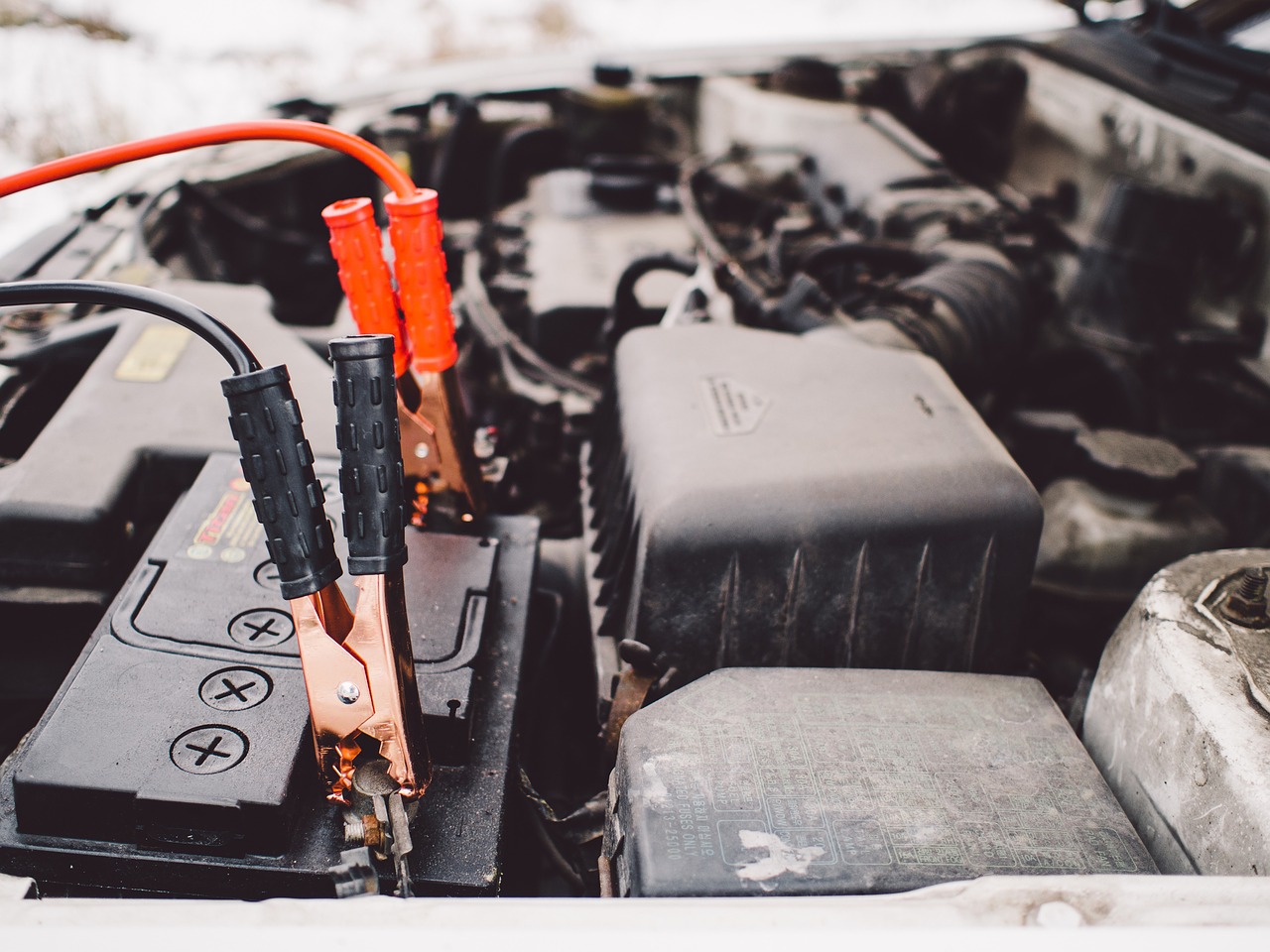Lifestyle
Here’s How to Change Your Car Battery Safely

While it is true that sometimes you will need to take your car to a garage for certain maintenance tasks, often you will find that you can do it yourself which can be a great way to make big savings – you also get a great deal of satisfaction completing the work yourself too. Changing the car battery might seem like a major job but it is actually one of the more straightforward maintenance tasks to complete – read on to find out how.
Locating the Battery
First, you need to find the battery which you can do by looking in the owner’s manual but is usually under the hood in a corner of the engine bay. Sometimes there will be a case covering the battery which can be easy to remove with a spanner from somewhere like RS Components.
Disconnecting the Terminals
Next, you will want to disconnect the terminals which is a simple task. Similar to the common household batteries that you use, there is a positive and negative terminal connecting to the car. You can normally release the battery with a quick-release clamp and you should disconnect the negative (-) terminal end first while making sure that the wrench (if required) never touches both terminals at the same time. Do the same with the positive (+) terminal.
Removing the Battery
To remove the battery once disconnected from the terminal, you will need to use a socket wrench to undo the strap or metal plate holding the battery in place and then lift the battery out (keep in mind that they can be heavy).
Installing the New Battery
Carefully position the new battery in place and tighten then strap or metal plate to secure it. Connect the positive terminal first this time (while making sure that the wrench does not come into contact with metal) and repeat for the negative terminal. It is then simply a case of making sure that everything is tight (but not too tight), double-checking that you have left no tools in the engine bay, closing the hood and testing your new battery by starting the car. Sometimes, replacing the battery will reset the car stereo so make sure that you know the code before starting.
Follow these steps to safely replace your car’s current battery. This is a task that sounds more intimidating and complex than it actually is and completing the work yourself will save you a tidy sum while giving you immense satisfaction knowing that you have done the work yourself.
Lifestyle
The Future of Education Through Patricia Vlad’s Eyes

The traditional systems that once defined learning, rigid curricula, standardized testing, and a narrow focus on academic performance, are increasingly being questioned. And why is that?
Starting in the 1880s, thinkers like John Dewey advocated for a shift in teaching methods, leading to the rise of progressive education. Unlike traditional models that emphasize rote learning and job preparation, progressive education puts students at the center of the learning experience. Changemakers like Patricia Vlad also believe that hands-on, experiential learning is the key to deeper understanding. This approach prioritizes critical thinking, curiosity, and personal passions, encouraging students to become lifelong learners who actively engage with new ideas and problem-solving. Schools and parents that embrace this model focus not just on what students need to know but on how they can continue to grow and adapt throughout their lives.
As the world changes, so do the skills, knowledge, and adaptability students need to succeed. The future of education is about personalization, inclusivity, emotional intelligence, and meaningful learning experiences.
With years of global teaching experience, Patricia has seen firsthand how different education systems approach learning. She believes that the future of education must embrace neuroscience, technology, and self-awareness to create a system that is not just efficient but also empowering for students.
“Education should be about more than just passing tests. It should equip students with the skills to navigate life, understand their strengths, and feel empowered in their learning journey,” Patricia emphasizes.
The Future Belongs to the Emotionally Intelligent
Unlike technical skills that may become obsolete with automation, EI – our ability to understand and manage emotions, build relationships, and navigate challenges, remains uniquely human. It plays a crucial role in self-awareness, resilience, effective communication, helping individuals excel in both personal and professional life.
When it comes to EQ, think of it like this: Kids with strong emotional intelligence are better at handling stress, resolving conflicts, and overcoming challenges. Studies suggest that EQ is a stronger predictor of long-term success than IQ. And let’s be real, no matter how advanced AI gets, it will never replace the depth and impact of human connection.
How LevelUp Cultivates Emotional Intelligence Through Patricia’s Coaching
1. Learning Will Be Personalized and Strength-Based
Instead of forcing students to fit into a system, education will be tailored to each child’s learning style, strengths, and interests. Neuroscience-backed methods – such as learning based on attention spans, emotional regulation, and brain development research – will be used to create adaptive learning environments, allowing students to progress at their own pace.
Through tools like LevelUp, which incorporates the Big Five Personality Model, teachers and parents will have a better understanding of a child’s cognitive profile, enabling them to offer more personalized support.
2. Emotional Intelligence Will Be a Core Part of Learning
The future classroom won’t just cover maths, science, history, or even language – it will also focus on self-awareness, empathy, and social skills. As research shows language doesn’t just communicate thought; it actively shapes it. The intentional use of language can influence how the brain processes emotion, memory, and social connection – making it a powerful tool for developing emotional intelligence.
LevelUp integrates EI into its framework, ensuring students not only understand themselves better but also build confidence, manage stress, and develop strong interpersonal skills.
3. Education Will Be More Interdisciplinary
The future of learning will move away from isolated subjects and toward interdisciplinary education, where concepts from different fields are connected and applied to real-world problems.
For example, students might blend neuroscience with psychology to understand learning processes or combine technology and art to develop creative solutions.
4. Technology Will Support, Not Supplant Human Connection
In the classroom of the future, meaningful engagement between students and teachers will remain at the heart of learning. Peer collaboration, hands-on projects, and real-time feedback from teachers will continue to be irreplaceable elements of education.
Technology will play a supporting role enhancing, rather than dominating, the learning process.
Whether through gamified modules, virtual simulation, or adaptive platforms, tools like LevelUp will be used intentionally to deepen understanding and personalize feedback, always in service of human connection, not as a substitute for it.
5. Schools, Parents, and Students Will Work Together
Education won’t be confined to the classroom. Parents will play a bigger role in guiding their children’s learning, using tools like LevelUp to track progress, support emotional development, and encourage curiosity at home.
By strengthening the parent-child-teacher connection, education will become a team effort, ensuring every student receives the support they need to reach their full potential.
A Future Built on Empowerment
By combining neuroscience, technology, and emotional intelligence, Patricia is helping to reshape education into something that prepares students not just for exams, but for life itself.
A truly effective education system values each student’s creativity and passions—not just their ability to recall information. Instead of just delivering information and expecting rote memorization for test scores, teachers encourage active, hands-on learning through projects, experiments, and peer collaboration. This approach allows students to explore topics that genuinely interest them, making learning more engaging, meaningful, and personal.
The LevelUp platform, developed under Patricia’s leadership, is contributing to a growing shift toward education that is rooted in self-awareness and real-world readiness. Additionally, emotional intelligence is a core part of learning, not an afterthought.
One story that sticks with Patricia is that of a student named Ethan, who had always been labelled “distracted” in class. His teachers described him as bright but inconsistent, often zoning out or fidgeting during lessons. When his LevelUp profile revealed high reactivity and strong openness, a new picture emerged: Ethan wasn’t disengaged—he was overwhelmed by too much information at once and thrived when topics were explored through hands-on, creative activities.
With this insight, his teacher began breaking tasks into smaller steps and introducing art and building projects tied to the curriculum. For the first time, Ethan started raising his hand during class and even stayed back after school to show his work. “We’d been trying to ‘fix’ him when all we needed was to understand him,” his teacher later shared.
It was a small shift, but for Ethan, it changed everything.
-

 Tech5 years ago
Tech5 years agoEffuel Reviews (2021) – Effuel ECO OBD2 Saves Fuel, and Reduce Gas Cost? Effuel Customer Reviews
-

 Tech6 years ago
Tech6 years agoBosch Power Tools India Launches ‘Cordless Matlab Bosch’ Campaign to Demonstrate the Power of Cordless
-

 Lifestyle6 years ago
Lifestyle6 years agoCatholic Cases App brings Church’s Moral Teachings to Androids and iPhones
-

 Lifestyle5 years ago
Lifestyle5 years agoEast Side Hype x Billionaire Boys Club. Hottest New Streetwear Releases in Utah.
-

 Tech7 years ago
Tech7 years agoCloud Buyers & Investors to Profit in the Future
-

 Lifestyle5 years ago
Lifestyle5 years agoThe Midas of Cosmetic Dermatology: Dr. Simon Ourian
-

 Health7 years ago
Health7 years agoCBDistillery Review: Is it a scam?
-

 Entertainment6 years ago
Entertainment6 years agoAvengers Endgame now Available on 123Movies for Download & Streaming for Free
